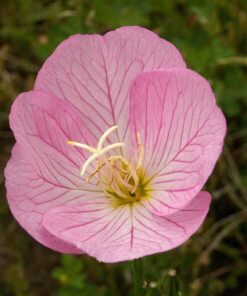Illinois Bundleflower
$9.90 /lbs. (pounds)
Native warm season legume used in range revegetation. Multiple stems grow from a woody caudex attached to a deep root system.
164 in stock
Native warm season legume used in range revegetation. Multiple stems grow from a woody caudex attached to a deep root system. Blooms are white flowers that produce a yellow tip. Found in prairie remnants, sloughs, or disturbed areas. Thrives on medium soils and is tolerant of most soil types. More abundant in a 20inch or greater rainfall zone but has good drought tolerance and temperatures to -18F.
Illinois bundleflower plants are most often found in prairie remnants, sloughs, woodland edges or disturbed areas. The plant thrives on medium textured soils and is tolerant of most soil types except heavy clays and exceptionally coarse sands. It grows more vigorously and is more abundant in a 20 inch or greater rainfall zone. Good drought tolerance can be expected in open communities with reduced levels of competition. Bundleflower is normally found growing in association with tall warm-season grasses
Alternate Names: False sensitive plant, Illinois mimosa, and Illinois desmanthus.
Uses: It is frequently used in range revegetation projects. It is recommended for use in range seedlings and for wildlife food and cover. Illinois bundleflower was a minor plant for use by Native American tribes. It is being studied as a potential human grain crop by an independent, self-funded non-profit research and educational organization based in Kansas.
| Grow Height |
Cold Tolerance |
Minimum |
Planting Rate |
|
1.5-4′ |
Good |
22” |
5 Pls |
| Weight | 1 lbs |
|---|
Be the first to review “Illinois Bundleflower” Cancel reply
You must be logged in to post a review.
Related products
Adapts to many soils. Use in meadow and prairie seed blends. Prefers cool climates.
Native, cool-season perennial which can grow up to three feet tall. The plant produces a basal rosette of leaves that can grow eight inches long.
Native, cool-season perennial which can grow up to three feet tall. The plant produces a basal rosette of leaves that can grow eight inches long.
Well adapted native annual wildflower to the plains states. Blooms first year into late summer.
Produces a mixture of annual and perennial plants. Recommended planting fall and winter. Colors produced will depend on plants that can establish in your soils but includes blue, yellow, and reds mainly.
Native to Texas and central U.S. Very hardy and plant that likes dry open prairies. Attractive, showy flowers.
Sprawling or semi-prostrate perennial with very showy flowers. Grows in various soils in the Texas hill country.
Native to Texas and many or the plains and mountain states. Often found growing in shallow soils, preferring disturbed sites in dry, sandy or gravelly soil with a neutral PH.










Reviews
There are no reviews yet.